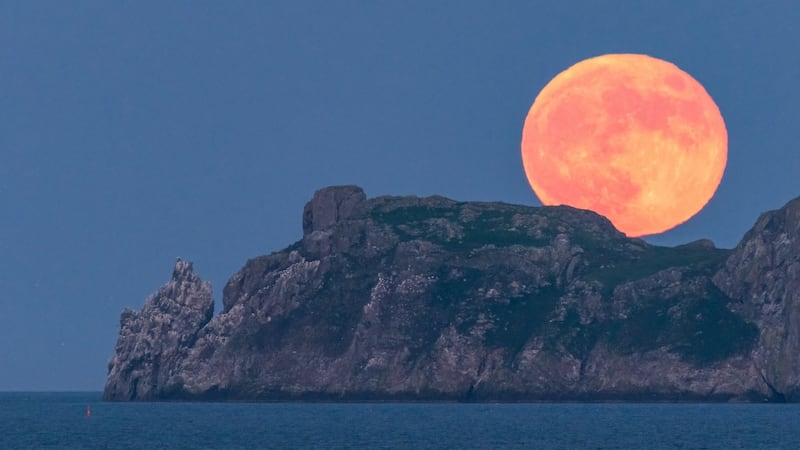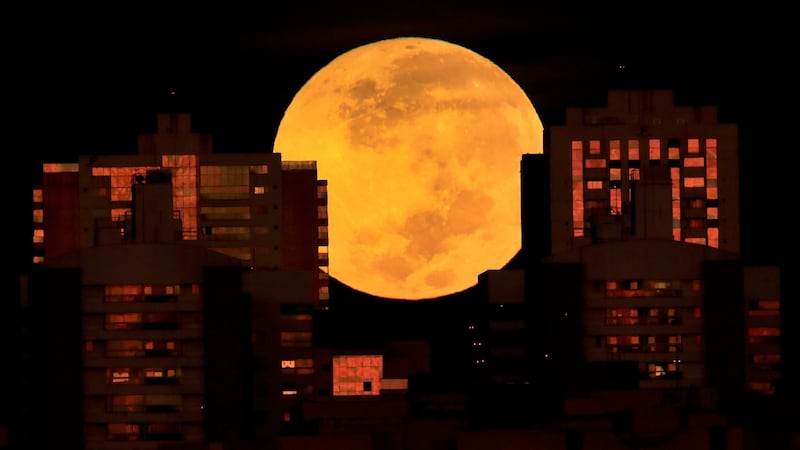A supermoon lit up the Irish skies last night, while in some other countries people got to experience the rare sight of a “super blood moon”.
A supermoon is a full or “new” moon that appears when the moon is closest to the Earth in its orbit. During the event, the moon usually appears about 15 per cent bigger and 30 per cent brighter.
The May supermoon coincided with a lunar eclipse which saw the moon turn red but that was only visible in parts of world including South America, Australia and South-East Asia.
Tonight’s moon rises behind Meelick Round Tower, County Mayo, Ireland.
— aDubinMayo (@redcaff) May 27, 2021
Also had some curious onlookers!@AstronomyIRL @PictureIreland @IrishTimes @Independent_ie @irishexaminer @thecontel @MayoNorth @MayoNorthEast @TourismIreland @WeatherRTE #Mayo#supermoon #Moonlight pic.twitter.com/avVzgrhkAL
Super Moon rising above Dun Laoghaire on May 26th from Poolbeg #2021 #Dublin, #Ireland
— David Costello Photography (@DavidCostelloDC) May 27, 2021
Flower Moon risies across #Dublin bay above the #DunLaoghaire #Lighthouse from #Poolbeg #FullMoon #DunLaoghaire #Ireland #Poolbeg #FlowerMoon @ThePhotoHour @StormHour @barrabest @deric_tv pic.twitter.com/1BWFWieDxh
A blood moon occurs when the moon sits directly in the Earth’s shadow and is struck by light filtered through the Earth’s atmosphere.
“A little bit of sunlight skims the Earth’s atmosphere,” explained Brad Tucker, an astrophysicist and cosmologist based at the Australian National University in Canberra. He said this creates the effect of “sunrise and sunset being projected onto the moon.”

Depending on your vantage point and the amount of dust, clouds and pollution in the atmosphere, he added, the moon appears pink-orange or burned red or even a brown colour.
“A super poo moon doesn’t really have the same ring,” he remarked.
Sky gazers in eastern Australia caught the eclipse beginning around 6.47pm local time Wednesday. Some took to the skies on a special flight to see the supermoon.
Vanessa Moss, an astronomer with Australia’s national science agency, noted that because a lunar eclipse occurred in the Earth’s shadow, only those on the “night side of the Earth” could experience it. Places like Europe and the east coast of the US missed out.

In all, there are 12 “full moons” every year. This is where the word “month” came from as early civilisations broke the yearly calendar into the 12 moons of the year, Astronomy Ireland’s David Moore explained.
Each full moon has an unofficial folklore name, usually taken from North American folklore. The best known is the Harvest Moon in September, with the May full moon being known as the Flower Moon.
For those who miss the supermoon on Thursday, a fourth and final supermoon of 2021 will be visible on June 24th. – Additional reporting New York Times











